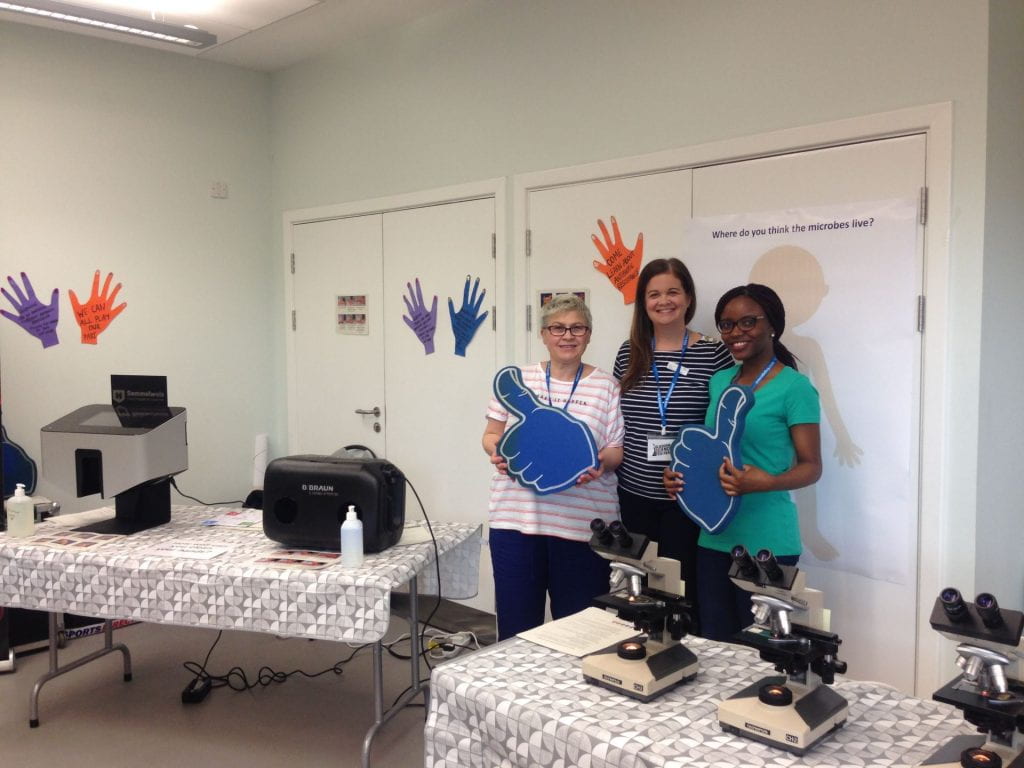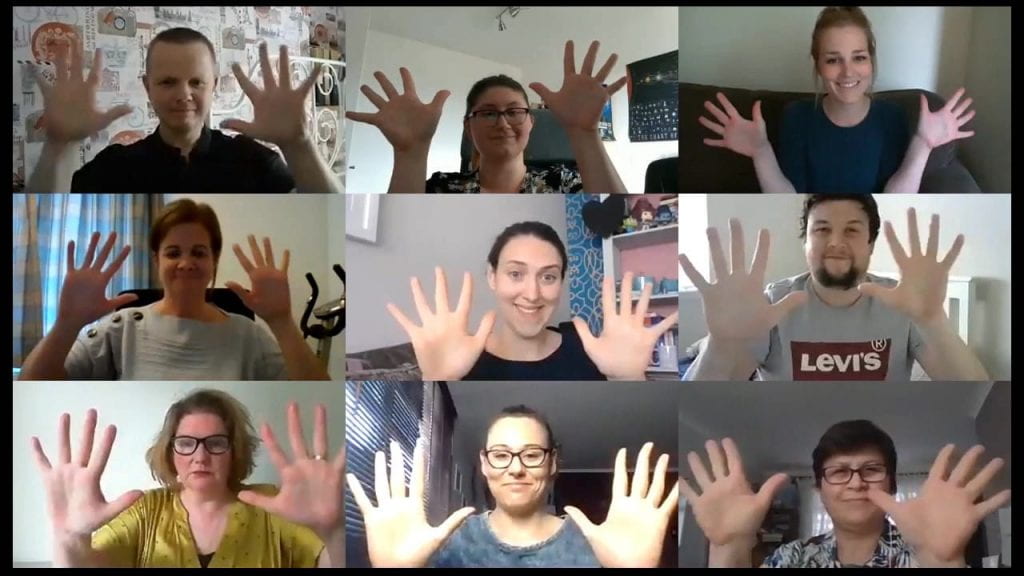In this blog we share tips from Alicia Ware (SHIP PhD Student) on how to carry out public engagement activities to communicate research. We also showcase some of the SHIP team’s past public engagement activities.
Public engagement can seem like a daunting thing for many.
How do you get up in front of school children, members of the general public, or members of a specific professional group, and talk about your research?
Translating any research may seem difficult, yet I believe that as scientists and academics we have a key role to play in shaping public narratives and breaking down barriers between academia and the public. I would like to share a few tips from my experience that might help you get started in public engagement.
Previous public engagement activities by the SHIP team
(Top left to bottom right: European Antibiotic Awareness Day 2018 at Cadder Primary School, Maryhill, Glasgow; Glasgow Science Festival 2019- Citizen Science Day; Hand Hygiene Day 2019; Hand Hygiene Day 2020)
Tip 1: Be interested
This may seem a little obvious but bear with me here. Enthusiasm is infectious, and the most effective engagement activities I have observed were delivered by individuals whose passion for the research they conduct permeated their discussions and activities.
Selecting a topic and activity that you are passionate about also helps change public perceptions of academia as unapproachable or boring.
Tip 2: Have a take-home message
Any activity that you do should have a key message driving it. Whether it’s a science festival activity, or a school visit, think about what you want your audience to remember. Many of SHIP’s activities focus on the importance of hand hygiene, and how to safely wash your hands using the Six Steps and songs. We see this as crucial knowledge from our research to share with the general public; this has been highlighted especially during the current COVID-19 pandemic.
Tip 3: Be hands-on
It is a good idea to try and involve the audience with your activity. This can be as simple as asking questions about what they might already know, or what they have learned from your activity. The most successful activities I have delivered personally have involved using everyday items to illustrate a concept, such as cupcakes, icing, sprinkles, Haribo sweeties, and play-doh (not all at the same time!).
It’s also really important to design your activity around the take-home message to maximise your impact.
Tip 4: Practice talking to a wide audience
When I was doing my undergraduate studies, I used to spend car journeys with my mother talking about the topics I’d learned in class recently. It was an opportunity to explain often complex topics which required a background understanding, to somebody who lacked that background in science. I remember explaining that phagocytes are like Pac-Man that engulf damaged cells or invading bacteria, or that antibodies are like chocolate sprinkles that attract phagocytes to the bacteria or damaged cells. Using everyday language and funny illustrations can help your audience understand and remember your activity.
Lastly, give it a go! Organisations like STEM Ambassadors welcome anyone who is interested and provide training to help you get started.
 You can check out the SHIP Twitter account and read our blogs on some of our previous public engagement activities. SHIP will also be participating in Explorathon 2020 as part of the European Researchers’ Night, so watch this space!
You can check out the SHIP Twitter account and read our blogs on some of our previous public engagement activities. SHIP will also be participating in Explorathon 2020 as part of the European Researchers’ Night, so watch this space!




